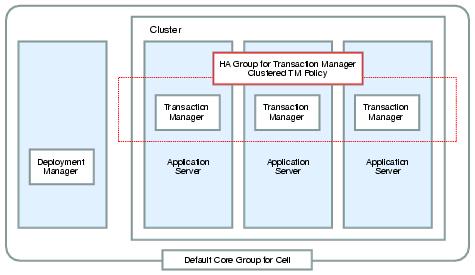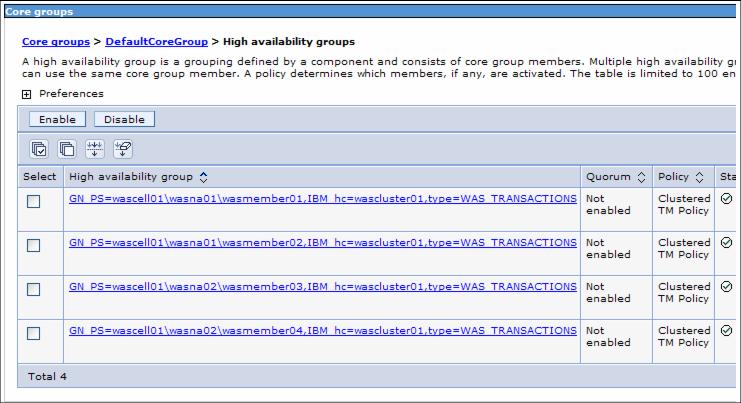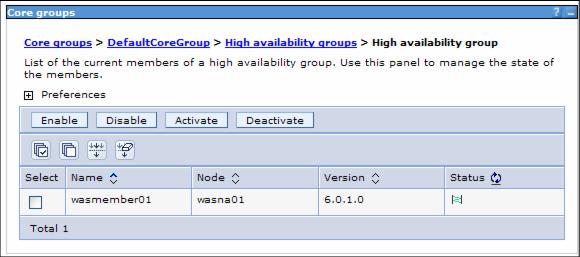
|
|
High availability groups are dynamic components created in a core group at run time. Each group represents a highly available singleton service. The available members in a group are ready to host the service at any time. See Figure 6-8.

Figure 6-8 High availability group for a Transaction Manager
To view a list of high availability groups, click Servers | Core groups | Core group settings | <core_group_name>. Then select the Runtime tab. Specify a match criterion for a list of specific high availability groups or an asterisk (*) as a wildcard to get a complete list of groups. For example, specifying type=WAS_TRANSACTIONS results in a list of Transaction Manager high availability groups. See Figure 6-9.

Figure 6-9 Find high availability groups for Transaction Managers
When you click Show groups, a list of high availability groups that match the criteria you specified is displayed as shown in Figure 6-10. Each high availability group is displayed along with its associated policy.

Figure 6-10 Listing Transaction Managers high availability groups
Select any high availability group and a list of group members is displayed as shown in Figure 6-11. Only running JVMs are displayed in the group member list. From here you can manage the group members by activating, deactivating, enabling or disabling them.
Be aware that even though you can perform these actions on the Administrative Console, you cannot do something that conflicts with the core group policies. For example, suppose you had a One of N policy with a preferred server managing a messaging engine and the ME is running on the preferred server. If you try to move the ME using the Administrative Console, the policy overrides that and leaves the ME where it is running. In that case, the only choice you have is to change the policy.

Figure 6-11 Managing a high availability group